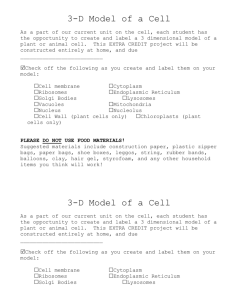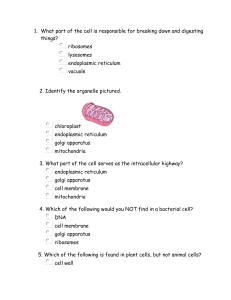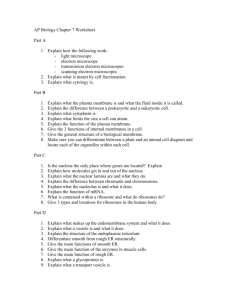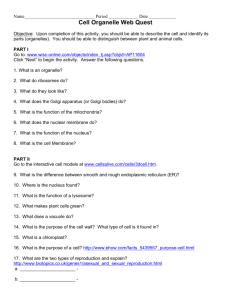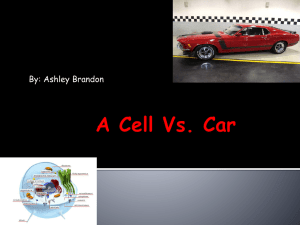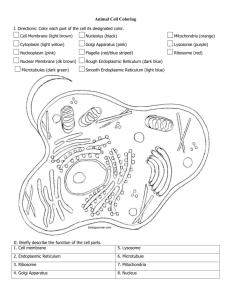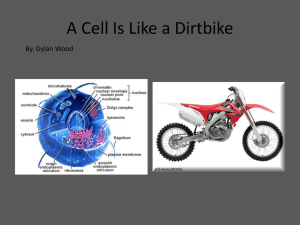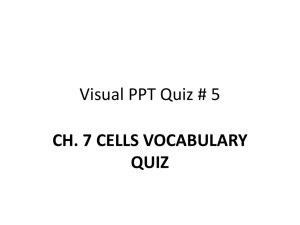Structure of the Human Body Terms
advertisement
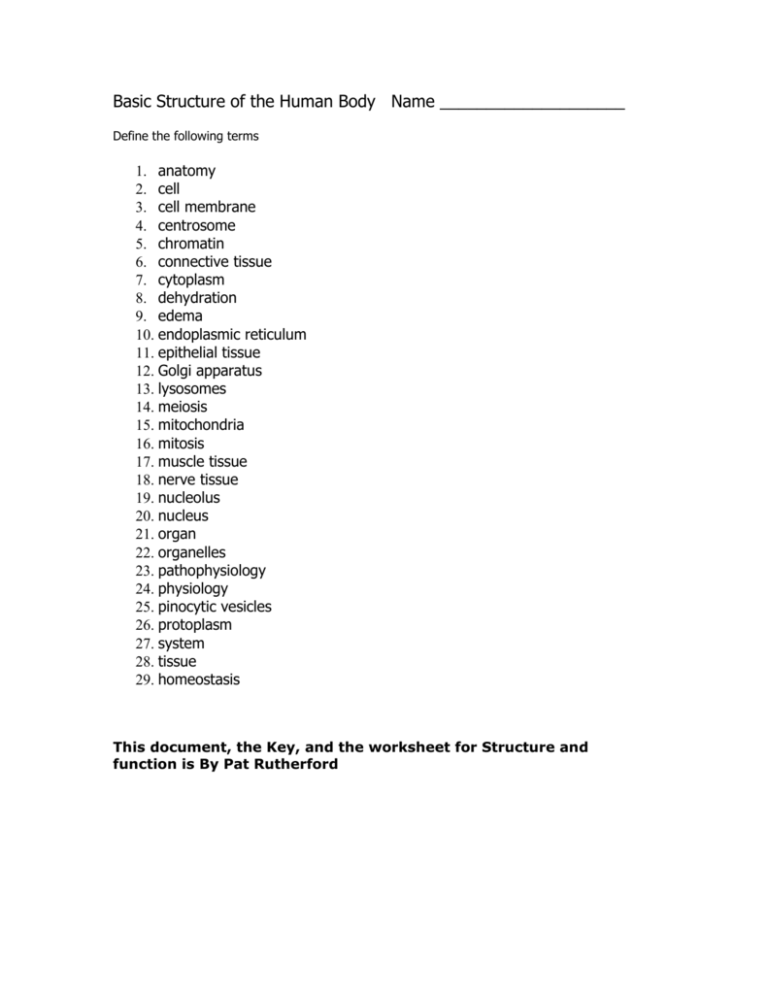
Basic Structure of the Human Body Name ____________________ Define the following terms 1. anatomy 2. cell 3. cell membrane 4. centrosome 5. chromatin 6. connective tissue 7. cytoplasm 8. dehydration 9. edema 10. endoplasmic reticulum 11. epithelial tissue 12. Golgi apparatus 13. lysosomes 14. meiosis 15. mitochondria 16. mitosis 17. muscle tissue 18. nerve tissue 19. nucleolus 20. nucleus 21. organ 22. organelles 23. pathophysiology 24. physiology 25. pinocytic vesicles 26. protoplasm 27. system 28. tissue 29. homeostasis This document, the Key, and the worksheet for Structure and function is By Pat Rutherford Basic Structure of the Human Body Name ____________________ Define the following terms 1. anatomy – study of form & structure of an organism 2. cell – basic unit of structure 3. cell membrane – outer protective covering 4. centrosome – created even cell division 5. chromatin – forms chromosomes 6. connective tissue – supporting fabric of organs 7. cytoplasm – semi-fluid 8. dehydration – insufficient amount of fluid 9. edema – excess of fluid that causes tissues to swell 10. endoplasmic reticulum – allows for transport of materials 11. epithelial tissue – covers the surface of the body & main tissues 12. Golgi apparatus – produces, packages & stores secretions for discharge from cell 13. lysosomes – contains digestive enzymes, destroys old cell, bacteria & foreign material important function of the body’s immune system 14. meiosis – sex cells division; forms the beginning of a body 15. mitochondria – powerhouse or furnace (breaks down CHO, proteins & fats=energy) 16. mitosis – asexual cell division; divides into 2 identical cells 17. muscle tissue – produces power & movement 18. nerve tissue – made of neurons; transmits messages 19. nucleolus – manufactures RNA ( aids in synthesis production of protein) 20. nucleus – brain of the cell, controls cell activity 21. organ – two or more same tissues that perform specific function 22. organelles – cell structures help with cell function i.e. nucleus, mitochondria, ribosomes, lysosomes, centrioles, Golgi apparatus, & endoplasmic reticulum 23. pathophysiology – study of how disease occur 24. physiology – study of why & how organism work 25. pinocytic vesicles – pocket folds of a cell to allow large molecules to enter i.e. fat & protein 26. protoplasm – basic substance for life 27. system – organs & other body parts joined together to perform a particular function 28. tissue – same type cells joined together for a common purpose 29. homeostasis – a constant state of natural balance within the body

